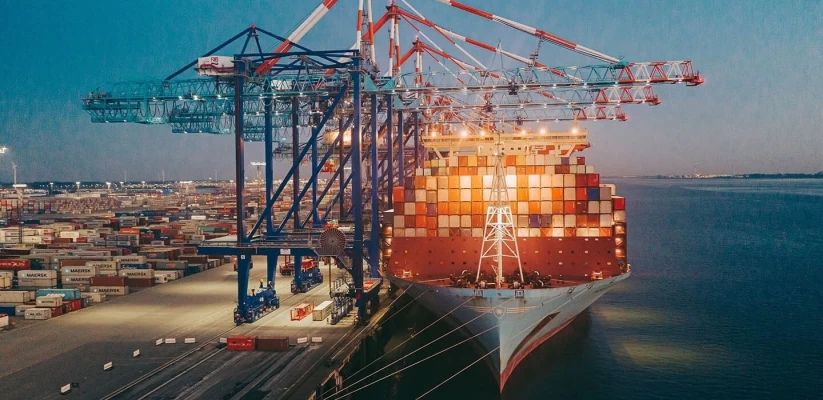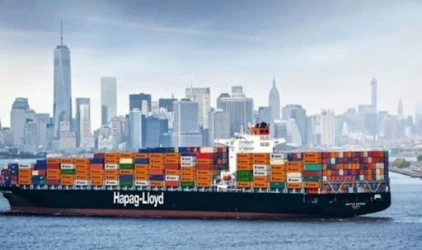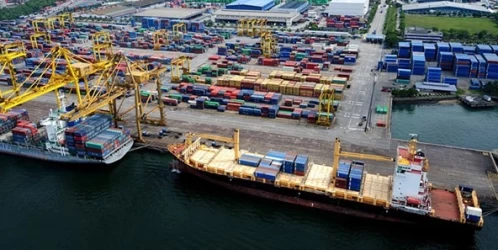Sea freight at Taicang port
Taicang Port, located in Jiangsu Province, China, is an emerging maritime hub playing a pivotal role in the country’s rapidly expanding international trade. Situated near major economic centers like Shanghai, the port serves as a crucial link between China's inland waterways and global shipping routes. Over the past few decades, Taicang has seen significant growth, driven by its strategic location, advanced infrastructure, and commitment to sustainable development. This article explores the key aspects of maritime transportation at Taicang Port, including its geographic significance, infrastructure, economic impact, sustainability efforts, and future challenges and opportunities.
Geographic Location and Strategic Importance
Taicang Port is located along the Yangtze River, which is one of the world’s busiest and most significant waterways. Its proximity to the Yangtze River Delta gives it an advantage in connecting to both domestic and international markets. The port is just 60 kilometers from Shanghai, making it an ideal extension of Shanghai's immense trade network. It provides a convenient alternative to Shanghai Port for cargo traffic, alleviating congestion while still offering access to major shipping lanes in the East China Sea and beyond.
This strategic position has made Taicang Port a critical point in China’s Belt and Road Initiative (BRI), enhancing trade routes across Asia, Europe, and Africa. Its location also enables easy access to industrial and commercial hubs throughout eastern China, further cementing its importance in global logistics and supply chain operations.
Port Infrastructure and Facilities
Taicang Port boasts state-of-the-art facilities designed to handle a wide variety of cargo types, from containers to bulk and general cargo. The port is equipped with deep-water berths that can accommodate large vessels, including Panamax and post-Panamax ships, making it a key player in the container shipping industry. It features advanced container terminals that ensure efficient loading and unloading, minimizing turnaround times for vessels.
In addition to its container handling capabilities, the port has specialized terminals for bulk goods, liquid chemicals, and automobiles. This diversity in cargo handling enables Taicang to cater to a broad spectrum of industries, including electronics, automotive, and manufacturing. Modern logistics infrastructure, including rail connections, highway networks, and storage facilities, allows for seamless integration between sea, rail, and road transportation.
Economic Role and Global Trade
Taicang Port has rapidly become a key hub for China’s export and import activities. It serves as a gateway for goods manufactured in China’s industrial heartland to be shipped worldwide. Major exports from Taicang include electronics, machinery, textiles, and automobiles, while the port imports raw materials such as oil, minerals, and agricultural products.
The port's ability to handle large volumes of cargo has contributed significantly to the economic development of the Jiangsu region. As one of China's fastest-growing ports, it plays an essential role in boosting local industries by providing them with access to global markets. Taicang is also home to numerous foreign-invested enterprises, further enhancing its role in international trade.
The growth of Taicang Port has had a substantial impact on China’s position in global trade. By improving the efficiency and capacity of its maritime logistics, Taicang has helped facilitate smoother and faster trade flows between China and its trading partners in Asia, Europe, North America, and beyond.
Sustainability and Environmental Initiatives
As global attention on environmental sustainability grows, Taicang Port has implemented several measures to reduce its ecological footprint. The port has invested in clean energy technologies and energy-efficient equipment to lower greenhouse gas emissions. One of its key initiatives is the use of electric and hybrid-powered port machinery, reducing reliance on fossil fuels and cutting down air pollution.
Taicang Port is also a participant in China’s Green Port Initiative, which encourages ports to adopt sustainable practices and technologies. The port has established strict guidelines to minimize water pollution, waste management, and emissions from ships docking at its terminals. Additionally, Taicang promotes the use of low-sulfur fuel by ships and implements shore-to-ship power systems, allowing vessels to turn off their engines while at berth and connect to the local electrical grid.
These initiatives align with global trends towards green shipping and are part of Taicang Port’s commitment to becoming an eco-friendly and sustainable maritime hub. The port’s efforts contribute to China’s broader goal of reducing the environmental impact of its logistics and transportation sectors.
Challenges and Future Opportunities
Despite its rapid growth and success, Taicang Port faces several challenges. One of the primary challenges is the increasing demand for capacity as global trade continues to expand. To keep pace, the port will need to continue investing in infrastructure, especially as larger vessels with higher cargo volumes become more common. Another challenge is competition from neighboring ports, including the massive Shanghai Port, which continues to attract a large share of international cargo traffic.
However, with these challenges come significant opportunities. Taicang Port has the potential to expand its role in the Belt and Road Initiative, particularly in developing trade links with emerging markets in Africa and Central Asia. The port's commitment to sustainability also positions it to be a leader in green maritime logistics, as environmental regulations become stricter worldwide. Moreover, with further technological advancements, such as automated port systems and digital supply chain integration, Taicang Port can improve efficiency and offer more value-added services to its customers.
Conclusion
Taicang Port has emerged as one of China’s most important maritime hubs, driven by its strategic location, advanced infrastructure, and role in global trade. Its proximity to major industrial centers and its ability to handle a diverse range of cargo types have made it a crucial player in international logistics. Additionally, Taicang’s commitment to sustainability and green shipping practices sets it apart in an increasingly eco-conscious global market.
As the port continues to grow and adapt to new challenges, it remains a vital part of China's expanding maritime network, contributing to both regional economic development and global trade. With continued investment in infrastructure, technology, and sustainability, Taicang Port is well-positioned to maintain its status as a leading port in Asia for decades to come.
If you have any specific questions or need further assistance, feel free to ask!











